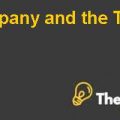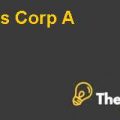
Comcast New England: A Journey of
Organizational Transformation
1. DIAGNOSING THE ORGANIZATION, GROUPS AND JOBS
Comcast New England’s subsidy before the four pillar transformation was centralized with void empowerment for the employees and customers alike. The diagnosis of Comcast shows that the organizational culture after the acquisition of AT & T Broadband became more of a flatter organization where employees could autonomously raise voice on the issues they faced and then help Comcast align their statement of intent with that of the customer and employee queries.
Before AT &T acquisition, Comcast seems to be a very centralized and formal organization, reflective of the 100 year telephone company legacy. The organization operates in a capital intensive industry that requires huge investment in the fiber optic networks, the high-speed internet and the digital phone services, all of which requires a lot of customer interaction which the company before AT& T acquisition failed to consider. The turnover rate is high along with increasing levels of customer dissatisfaction, which are reluctant to carry Comcast’s name along with them, with the fear of customer agony. Comcast’s primarily focuses on the duration of the call as a parameter to measure customer satisfaction rather than the efficiency in solving customers’ complaints.
The groups after AT&T acquisition seem entrepreneurial and innovative with a motivation to aggressively endorse change in the organization. The senior manager’s group was unaware of the hassle faced by customers and Comcast was increasingly going short of customers. The employee morale was going down and Comcast was labeled as one of the not preferable organizations to work for. The jobs were strictly functional, with no autonomy to deviate from the routine ways of carrying operations and the same old methods to deal with customers. The employee perspective was not taken into account in any of the organizational or functional level decisions. Comcast’s inability to incorporate the employee voice in the decision making process made the organization to void its leadership skills. The lack of vision statement for Comcast adds to its inefficiency to gain momentum in the industry it operates in order to retain a respectful image in the mind of the consumer.
In addition to this, competitors (Verizon and SBC Communication) gained a good pace at eating the market share of Comcast to phone companies. Despite the fact of losing market share to phone companies, Comcast after the acquisition of AT & T focused primarily on telephone clientele and had least focus on the developing a newer product line, which was also gaining popularity in the industry. The Comcast’s New England’s leadership team faced a lot of challenges these include restrictions for investment in network upgrades, continuous loss on the customer base with the present structure, inability of the local management of to own the customers, higher turnover rates, declining levels of employee satisfaction and employee morale.
2. EVALUATING AND IMPLEMENTING OF INTERVENTIONS
With the rising demand of the industry to have a laser focus on the customer base and also the necessity to maintain an optimal level of consumer satisfaction at all levels from experience through the end product to the customer query, Comcast is in a desperate need at present, to incorporate organizational development at a wider level. It can be seen through the case analysis that Comcast employed Strategic Fitness Process (SFP) as a tool to engage employees in the movement to change, which is planned by the leadership team. Comcast articulated a statement of intent. The SFP is a good strategy to harness capabilities of the employees in hand but it had a disadvantage of being time-consuming and persistent employee involvement. The SFP is deployed in two iterations from May 2003 to December 2005. The SFP was based on three pillars, which were inclusive off giving first priority to the customer by giving them the experience of wowing; this was done with intention to make Comcast a great place to work and in order to achieve hard numbers.
The SFP conducted a survey from the employees at Comcast, who were comfortable in giving their true opinion about the organization’s current position and also the reasons behind it. The survey highlighted three areas of concern that included: poor coordination, ineffective leadership style and style of the general manager. The evaluation of the SFP-I indicates new gaps that were never recognized by the leader themselves before. The first phase gave Comcast an idea of what the problem was along with its validation and the insight on those matters that were not recognized them. The issues highlighted increasing rigor of the SFP technique as it validated the same problem by survey, which were already anticipated by the organization and it even validated those problems which Comcast could not even imagine.
The results also emphasized on putting a halt to the outsourcing of large portion of service calls to Florida and Canada, equipping the employees with operational efficiencies to give quality service and making Comcast a more ...........................
This is just a sample partial case solution. Please place the order on the website to order your own originally done case solution.
This case describes how Kevin Casey, New-Comcast, England Region General Manager of the organization becomes low adherence and performance. When he led the region Comcast he inherited an organization that was bureaucratic, had low customer satisfaction, and it was poorly executed. The case describes the transformation journey from 2003 to 2006. The case describes the changes in the management team, the structure and processes of the organization. It follows two powerful illustration of the interaction of the worker for an honest conversation between the older groups and organizations that Casey and his top team believes is an important ingredient in the success of reforms. It ends the review of changes in financial performance, employee relations and customer satisfaction. The case describes the important role played by human resources function in facilitating the process of change, and it describes the transformation of its role from transactional to strategic. "Hide
by Michael Beer, Anita Arun Source: Harvard Business School 23 pages. Publication Date: January 31, 2008. Prod. #: 908405-PDF-ENG













